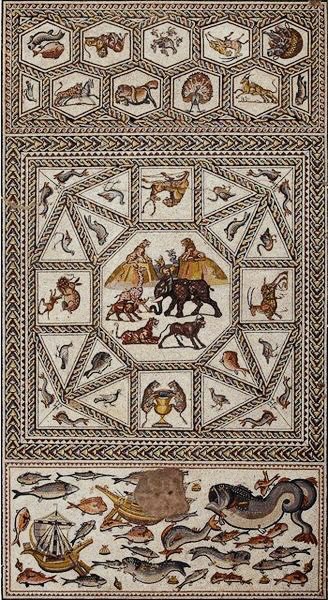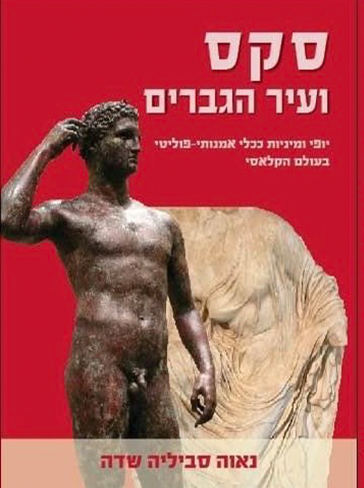“DE RERUM NATURA: THE LOD MOSAIC FLOOR AS A COSMOLOGICAL AND TRANSCENDENTAL ALLEGORY”, Baltic Journal of Art History, vol. 22, 2021, pp. 163-187. Published 9.2.22
Nava Sevilla Sadeh, “DE RERUM NATURA: THE LOD MOSAIC FLOOR AS A COSMOLOGICAL AND TRANSCENDENTAL ALLEGORY”, Baltic Journal of Art History, vol. 22, 2021, pp. 163-187. Published 9.2.22

The Lod Mosaic, Israel Antiquities Authority Public Domain
שטיח הפסיפס הרומי המפואר מלוד, המתוארך לשנת 300 לספירה, מורכב משלושה פאנלים: הפאנל המרכזי והעליון מציגים צורות גיאומטריות המקיפות דימויים שונים ובעלי חיים, בעוד שבפאנל התחתון מופיעים יצורים ימיים וספינות על אותו מישור.
במחקר זה ביקשתי להציע, שהפסיפס מציג דימוי סימלי, מטאפורי ורעיוני של היקום כפי שהוא נתפס בעת העתיקה.
ניתוח של המאפיינים האסתטיים ומשמעות הדימויים, הן של כל פאנל בנפרד והן של הפסיפס כאחדות, תוך התבססות על תפיסות עולם פילוסופיות המעוגנות במחשבה הרומית, הובילו למסקנה שפסיפס זה מציג אלגוריה קוסמולוגית וטרנסנדנטלית של היקום.
The Lod Roman carpet mosaic, dated to around 300 CE, consists in three panels containing images of animals. Anchored in the methodology of artistic research, the present study seeks to analyze both the aesthetic features of each panel and the mo- saic as a unified work, based on the approach that these features, together and individually, contribute to the overall idea. Based on Roman thought, this study focuses on the metaphorical and symbolic meanings of the depicted animals and other images, interpreting them as a cosmological and transcendental allegory.



